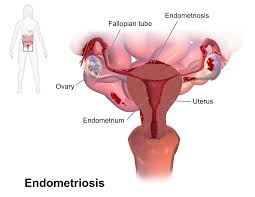
Introduction
Endometriosis is a chronic condition affecting approximately 1 in 10 women of reproductive age. It occurs when the tissue that normally lines the inside of the uterus, known as endometrial tissue, grows outside of it, leading to various painful symptoms and complications. The awareness of endometriosis has grown significantly in recent years, catalysed by advocacy from affected individuals and health organisations. Understanding endometriosis is crucial for timely diagnosis and effective management, as many women suffer from this condition without realising its impact on their health and quality of life.
What is Endometriosis?
Endometriosis occurs when cells similar to the endometrial cells grow on the ovaries, fallopian tubes, and other areas outside the uterus. This can result in inflammation, scarring, and adhesions, which can lead to severe pain, especially during menstruation. Other symptoms may include pain during intercourse, excessive bleeding, and infertility. According to the World Health Organization, the condition affects an estimated 190 million women worldwide, yet it often goes undiagnosed due to a lack of awareness and understanding among both patients and healthcare providers.
Recent Developments and Treatments
Recent studies have examined various treatment options for endometriosis, ranging from hormonal therapies in the form of birth control pills to more invasive surgical procedures to remove endometrial tissue. In the UK, new guidelines emphasise personalised treatment plans that consider the severity of symptoms and patient preferences. The National Health Service (NHS) has also launched educational initiatives to equip healthcare professionals with the knowledge necessary to better recognise and treat the condition.
Notably, researchers are exploring promising avenues in the form of new medications, including GnRH agonists, which help to manage symptoms more effectively. Additionally, lifestyle modifications, such as dietary changes and exercise, have been recommended to alleviate symptoms and improve overall well-being.
Conclusion
As awareness of endometriosis continues to grow, it is vital for women and health professionals to recognise its symptoms and advocate for appropriate medical care. With ongoing research and developments in treatment, there is hope for improved quality of life for those affected by this challenging condition. The future of endometriosis management lies in enhanced education, better access to healthcare services, and continued investigation into more effective therapies. Recognising endometriosis as a significant health issue is essential in helping millions of women navigate their health journeys with the support they need.
You may also like

Understanding Melatonin: Uses, Benefits, and Importance

Understanding the Importance of Bones for Our Health
